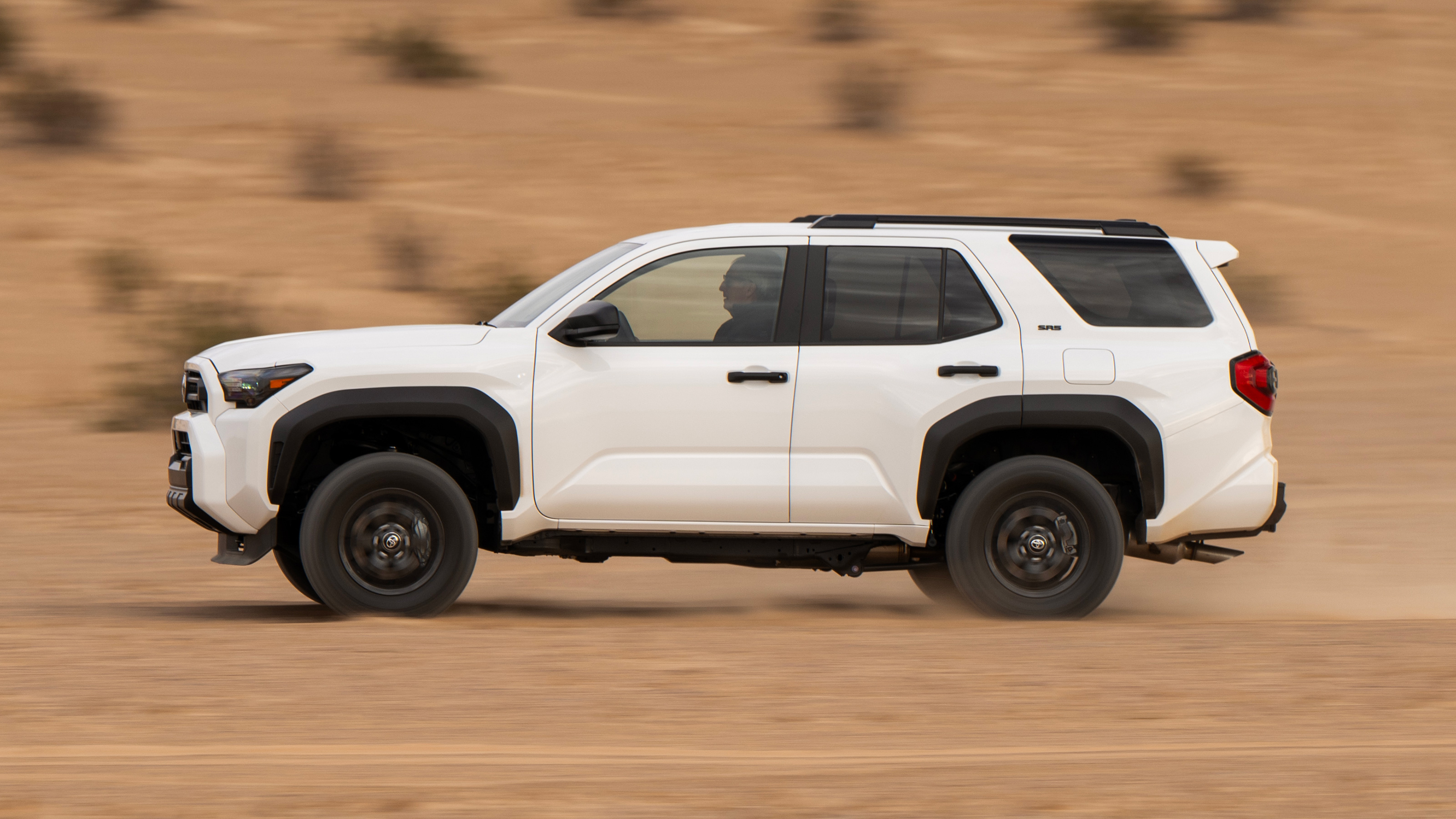
Toyota 4Runner (US) review
Interior
What is it like on the inside?
Matching the exterior is an interior that goes the extra mile for style and function. There are grab handles aplenty for easy entry and exits, or to grasp while the 4Runner bounces crazy-style across the terrain. There are loads of little details like mesh patterns in between trim elements and, depending on trim, a patterned dashboard to look like iron ore or brushed metal, with thick Toyota branding on top.
The cabin is also spacious enough for four large adults to sit comfortably, with room for a fifth before dipping into the cargo space. Due to the packaging of the hybrid battery, the i-Force Max 4Runners are reduced to 42.6 cu ft (1,206 litres) in the rear, when it’s usually 48.4 cu ft (1,371 litres). This also nixes the option to have an additional third row, but given how tight it is, that’s not a big loss.
How’s the tech?
Toyota throws in its usual standard safety equipment of pre-collision control, lane departure and dynamic cruise control. There’s also auto high beam and road sign assist (AKA it tells you what the speed limit is).
Standard models are equipped with an eight-inch multimedia display and an eight-speaker audio system while other trims include a 14-inch touchscreen and, you guessed it, 14-speaker audio. This JBL-sourced system also throws in a subwoofer and a portable speaker that pops out of the dash. Either system is Apple CarPlay and Android Auto compatible.
Contingent on trim, there is a bank of cameras to aid in the traversal of both the outdoors and parking garages alike. It even gets a dedicated hard button on the center console, too, which we’re happy to see. However, when it comes to scrambling over rocks and navigating ruts, the cameras shut down at too low a speed – it’s a chore to re-engage the helpful feed each time you slow for a new obstacle.
Featured

Trending this week
- Car Review
BMW iX3






